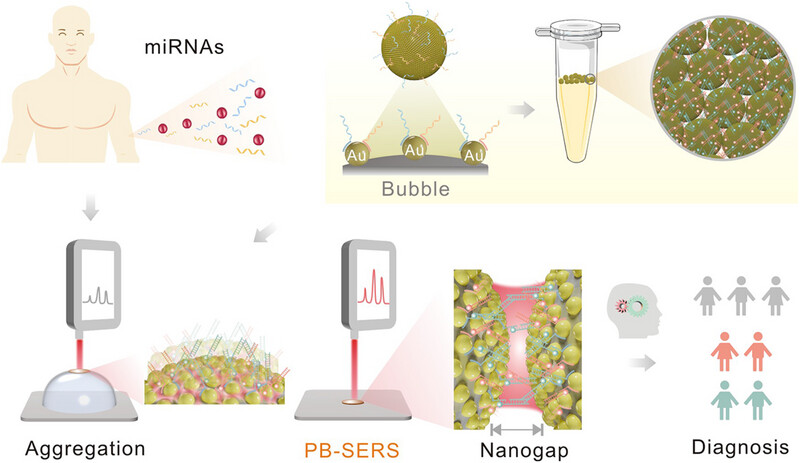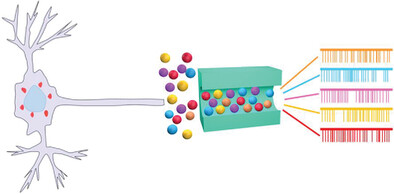
3. Biological Aggregates
Recommended by Prof. Yuning Hong
In biological systems, biomaterials are functioning with specific assemblies or conformations in the aggregated state, like proteins and DNA. The structures, assemblies, and working mechanisms of various biological aggregates are crucial for their biological activities and biomedical applications. In this section, research regarding the biological aggregates is collected.
2024
Unveiling the nanoscale architectures and dynamics of protein assembly with in situ atomic force microscopy
Graphical Abstract
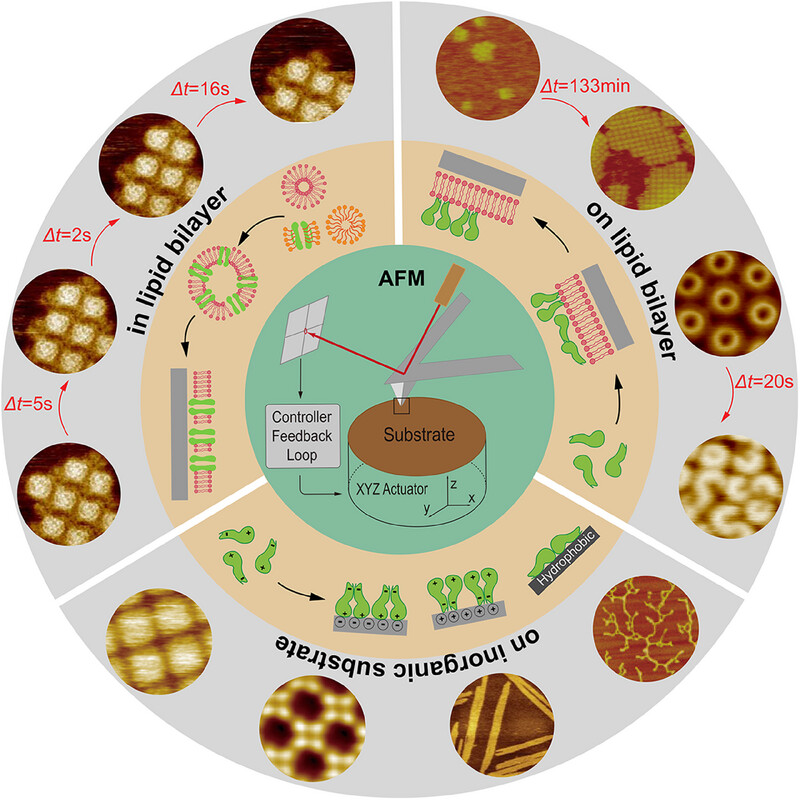
Proteins form complexes through precise folding and interactions, which are crucial for biological processes. Understanding these mechanisms provides valuable biophysical insights and guides the design of biomimetic materials for applications in medicine, energy, and nanotechnology. Atomic force microscopy (AFM) is essential for studying protein assemblies and interactions in situ at various spatial and temporal scales. This review highlights recent advancements in AFM for elucidating protein structures, diffusions, interactions, phase transitions, and dynamics at solid‒liquid interfaces. It emphasizes the expanding role of AFM in exploring protein assembly and its implications for biomaterial and biomedical research.
An artificial chaperone serves a dual role in regulating the assembly of peptides through phase separation
Graphical Abstract
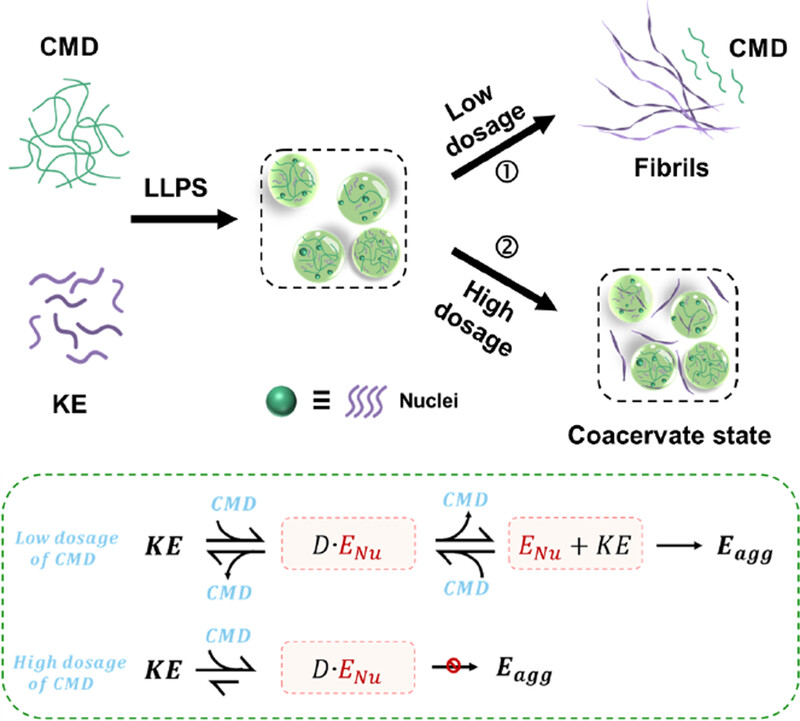
An artificial chaperone can serve opposite roles, a catalyst at low dosage while an inhibitor at high dosage, in regulating the supramolecular polymerization of peptides. This system undergoes a cascading phase separation process, and the interplay and evolution of electrostatic and hydrophobic interactions between chaperones and peptides are the keys to achieving these processes.
DNA nanostructures prevent the formation of and convert toxic amyloid proteospecies into cytocompatible and biodegradable spherical complexes
Graphical Abstract
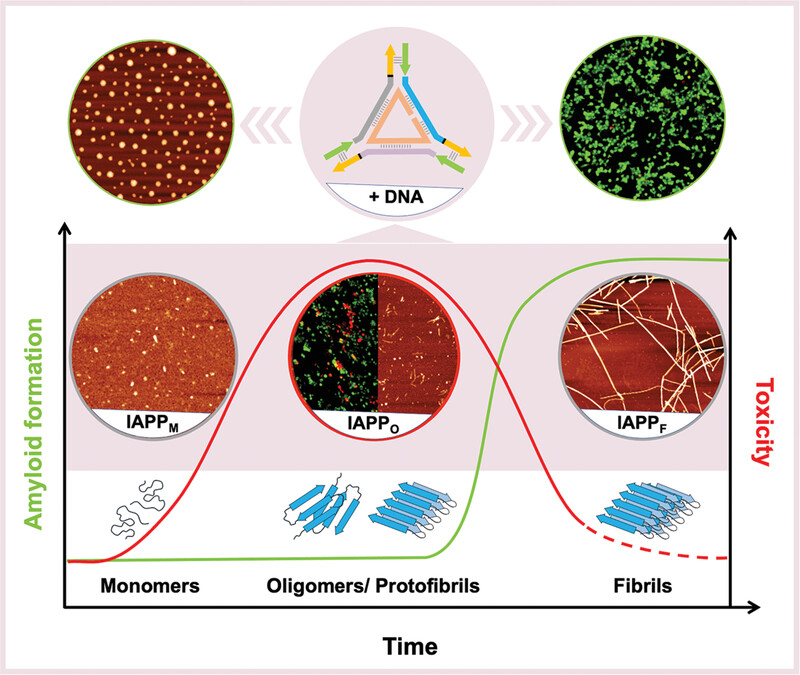
Double-stranded DNA nanostructures fully inhibit amyloid fibril formation and efficiently disassemble enzymatically and thermodynamically stable fibrils into cytocompatible and degradable complexes. Remarkably, DNA nanostructures avidly trap highly toxic soluble oligomeric species in complex biological media and convert them into non-toxic binary complexes.
Aggregation and aging of nanoparticle–protein complexes at interfaces studied by evanescent‐light scattering microscopy
Graphical Abstract
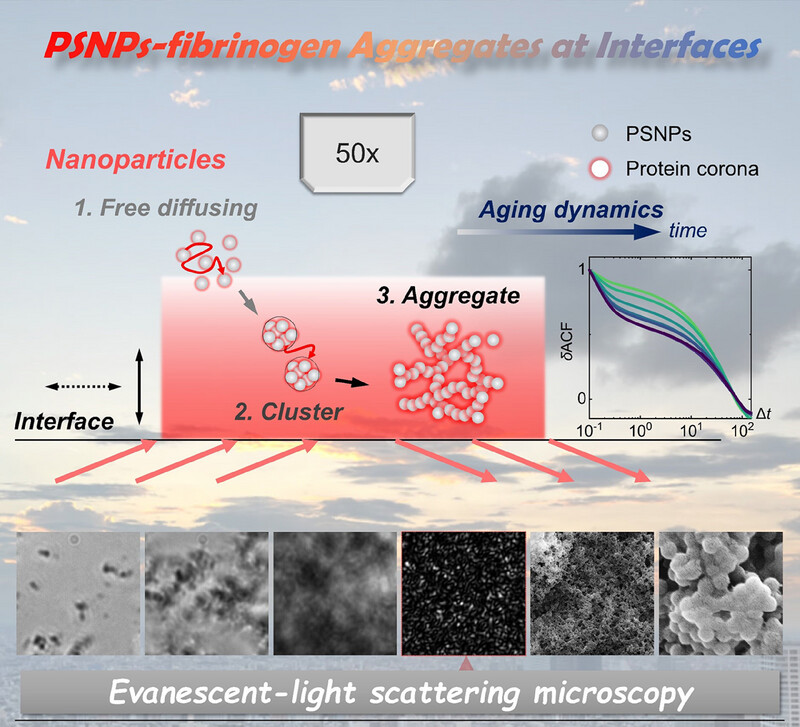
Aggregation and aging of nanoparticle‒protein complexes at interfaces are resolved via evanescent-light scattering microscopy. Time- and space-resolved measurements by correlation functions show that the aging of such soft materials is out-of-equilibrium, stretched and compressed exponential decays can coexist in one aging process. Corona formation, inner stress, and interconnection are key for the aggregation and aging dynamics.
Payload‐free protein nanoparticles target inflamed colons to restore intestinal barrier integrity for effectively treating inflammatory bowel diseases
Graphical Abstract

Payload-freeprotein nanoparticles (PNPs) wereself-assembled from purified silk fibroin (SF) with β-sheetstructures under the assistance of ethanol in aqueous media. The orallyadministered PNPs, without loading anything, are stable in the gastrointestinaltract (GIT) and can retain in the inflamed colon, modulate intestinalmicrobiome and metabolome, and effectively treat colitis without causingundesired side effects.
Mechanism of hierarchical plasmonic biomaterials engineered through peptide‐directed self‐assembly
Graphical Abstract
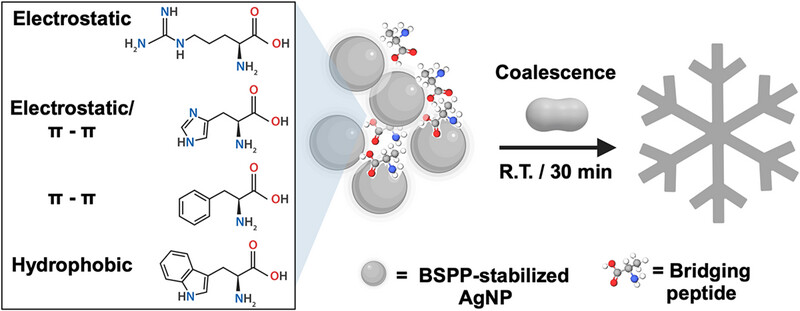
Peptide-mediated nanoparticle self-assembly uses diffusion-limited aggregation of silver nanoparticles to provide a scalable and tunable method for building hierarchal plasmonic fractal structures. By leveraging peptide sequences to control interparticle distance and material morphology, this approach simplifies synthesis and reveals insights into assembly mechanisms for applications in sensing and electronics.
A Vanillin‐Derived Inhibitor of Aggregates via Targeting Intrinsically Disordered Regions of Phytoviral Nucleocapsid Protein
Graphical Abstract

This study identifies a novel small-molecule phase separation (PS) inhibitor 29 and a pathogenic factor GTP-binding nuclear protein Ran-like (NbRANL) in Nicotiana benthamiana. NbRANL promotes nucleocapsid protein (NP) PS. Compound 29 targets the intrinsically disordered regions of the NP and inhibits NbRANL expression, disrupting the PS and significantly suppressing tomato spotted wilt virus (TSWV) pathogenicity.
DNA nanomachine‐driven chemodynamic therapy against glioblastoma
Graphical Abstract
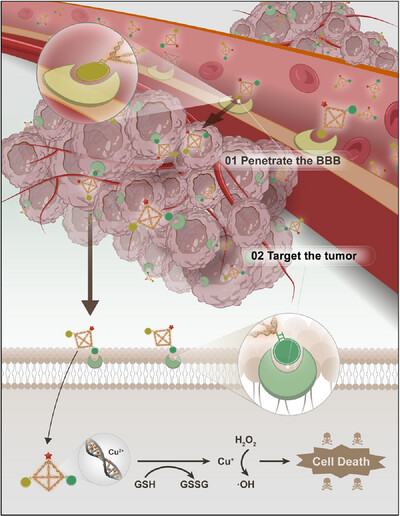
A novel DNA nanomachine (Cu@tFNAs-G-A NM) is constructed and exhibits the ability to effectively penetrate the BBB and selectively accumulate in tumor cells. Moreover, the Cu@tFNAs-G-A NM can react with tumor-overexpressed GSH and H2O2 to generate a large amount of •OH, thus leading to an effective CDT against GBM.
DNA‐encoded plasmonic bubbles aggregating dual‐microRNA SERS signals for cancer diagnosis
Rapid degradation of DHX36 revealing its transcriptional role by interacting with G‐quadruplex
Graphical Abstract
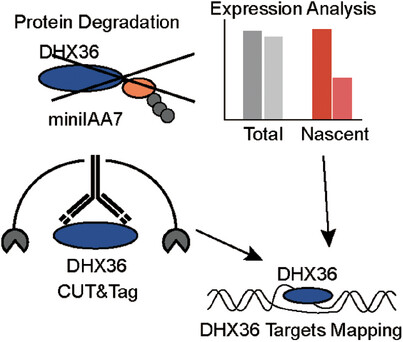
Previous evidence suggests helicases regulate transcription. This study explores DHX36's transcriptional role using CUT&Tag to map binding sites in MCF-7 cells. AMUC-seq and AID systems identify DHX36-regulated genes. Results show G4s enrich at DHX36 targets, primarily in active regions. DHX36 interacts with G4s from oncogenes, implicating its role in transcription modulation.
Droplets Cas13a‐RPA measurement delineates potential role for plasma circWDR37 in colorectal cancer
Graphical Abstract
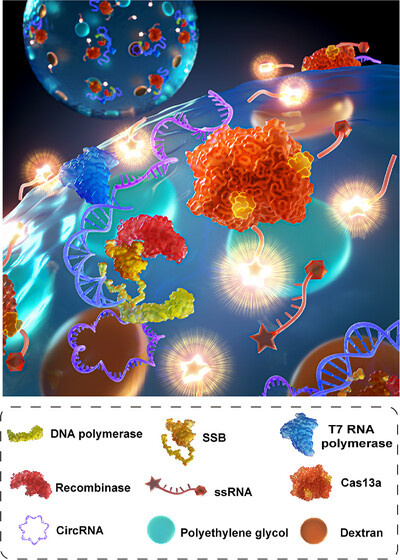
The crowded agents in the droplets (polyethylene glycol and dextran) exclude the volume effect and enhance the activity of recombinant enzymes, single-strand binding proteins (SSB), and DNA polymerase. Crowded agents improve reaction efficiency by stabilizing proteins and clustering reaction components into a small space. Circular RNA, under the combined action of recombinant enzymes, single-strand binding proteins, and DNA polymerase, generates double-stranded DNA. The double-stranded DNA is transcribed into target single-strand RNA by T7 RNA polymerase, and Cas13a protein binds to the target RNA, activating the trans-cleavage activity of Cas13a protein. Subsequently, Cas13a cleaves the ssRNA nonspecifically, achieving quantitative detection of circular RNA in the droplets.
Interaction between amylose, fatty acid, and β‐lactoglobulin to study multiple biomacromolecules self‐assembly and application
Graphical Abstract
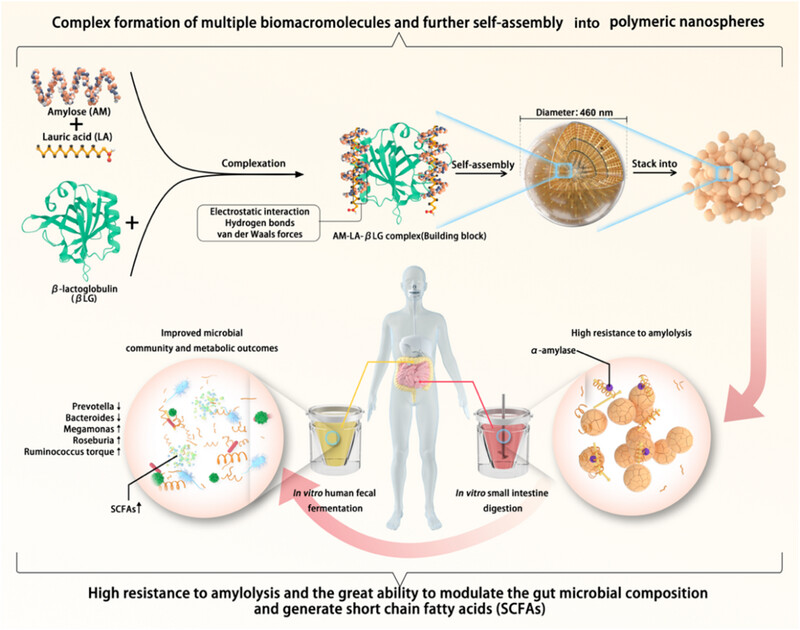
On the basis of revealing the ternary interaction mechanism of multiple biomacromolecules (amylose [AM], lauric acid [LA], and β-lactoglobulin [βLG]) through experiments and simulation calculations, a thermally controlled hierarchical strategy was firstly reported for self-assembly of AM–LA–βLG complex into uniform-sized nanospheres with well-defined crystalline structure and stability. These nanospheres were substantially resistant to amylolysis and presented great fermentation functions by gut microbiota, including production of short-chain fatty acids and regulating the bacterial composition and diversity.
Versatile and efficient fabrication of signal “turn‐on” lateral flow assay for ultrasensitive naked eye detection of small molecules based on self‐assembled fluorescent gold nanoclusters‐antigen aggregates
Graphical Abstract

A simple antigen self-assembled metal nanoclusters aggregation fixation strategy is proposed, which eliminates the complicated operation of chemical modification of fluorescent nanomaterials and makes the preparation of fluorescence signal “turn-on” lateral flow immunoassay (FONLFA) strips almost as simple as the conventional AuNPs-LFA strips. In addition, Fe-polydopamine nanoparticles were 40 times more powerful than AuNPs in quenching FONLFA.
Special RCA based sensitive point‐of‐care detection of HPV mRNA for cervical cancer screening
Graphical Abstract
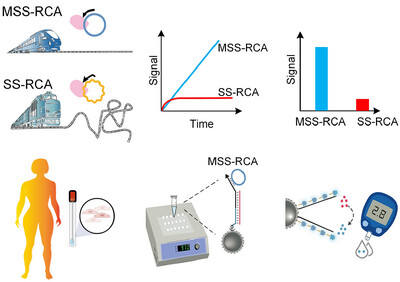
A minimum secondary structured RCA technique (MSS-RCA) is introduced by designing a unique circular template with significantly enhanced amplification efficiency and sensitivity. By incorporating an invertase probe, MSS-RCA detected HPV16 E6/E7 nucleic acid with high sensitivity and accuracy using a personal glucose meter, offering a valuable tool for cervical cancer screening in point-of-care.
Organoids in concert: engineering in vitro models toward enhanced fidelity
Graphical Abstract
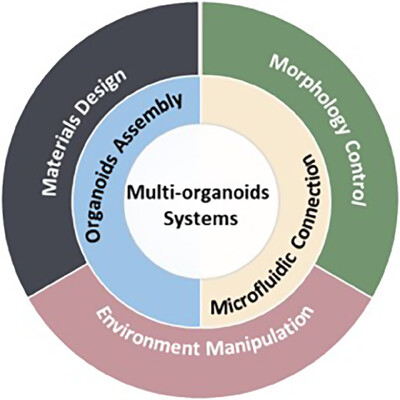
Organoids have emerged as promising in vitro models, but current research primarily centers on single organoids, missing crucial inter-organ communication. This review explores diverse aspects including materials design, culture environment manipulation, and organoid morphology control to establish and enhance multi-organoid systems for more comprehensive and physiologically relevant in vitro modeling of complex human physiology.
2023
Rational design of water‐soluble, homotypic keratins self‐assembly with enhanced bioactivities
Graphical Abstract
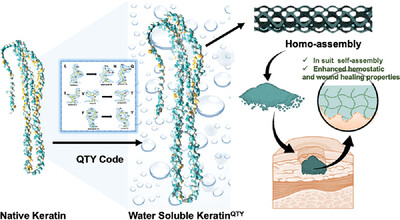
We rationally designed the water-soluble recombinant keratins using QTY code to enhance their homotypic self-assembly performance in the aqueous environment, which was a great help to form a gel at the wound sites using one kind of keratin rather than two heteropolymerics of specific keratin pairs. Furthermore, QTY variant keratins displayed superior hemostatic and wound healing activities compared to native recombinant keratins.
The overview of antimicrobial peptide‐coated implants against oral bacterial infections
Graphical Abstract
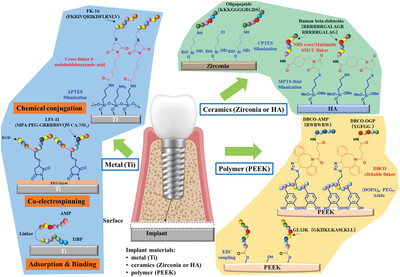
The rise in antibiotic resistance shows ongoing pressure to implant placement and can lead to implant failure, especially dental implants. Numerous strategies are applied to reduce/prevent peri-implantitis, including coating peptide antibiotics. Here we summarise the current strategies of coating AMPs, for example chemical or self-assembly approaches, onto dental implants with multi-functional properties to enhance osteoblast growth and prevent bacterial infections.
Aggregation‐induced emission artificial enzyme (AIEzyme) with DNase‐like activity: Imaging and matrix cleavage for combating bacterial biofilm
Graphical Abstract
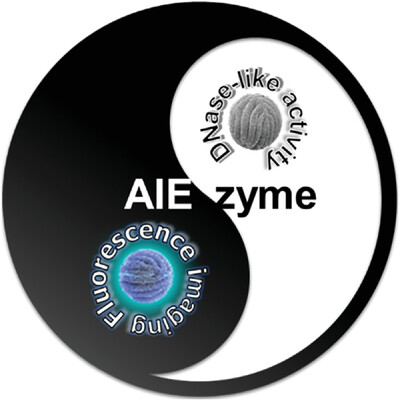
Aggregation-induced emission artificial enzyme (AIEzyme) with DNase-like activity is designed by the coordination polymerization of AIE ligands and Zr4+ centers. AIEzyme shows long-acting hydrolysis for eDNA with good penetrability in biofilm and realizes superbug-infected wound healing under only one dose. The structural rigidity-stabilized fluorescence of AIEzyme facilitates the study on its penetrability and residual amount during anti-biofilm process monitoring.
Detaching adhesive oil staining from a surface by water
Graphical Abstract

This work presents an ingenious design to create oil-repellent packaging materials and tableware toward detergent-free water-cleaning pathways, thereby greatly reducing the negative environmental impact of surfactant emissions. The key point of this report is that the introduction of an amyloid-like phase-transitioned lysozyme intermediate layer into a cellulose nanocrystal coating can rapidly modify any target surface to create a robust underwater oil-repellent state.
Protein amyloid aggregate: Structure and function
Graphical Abstract
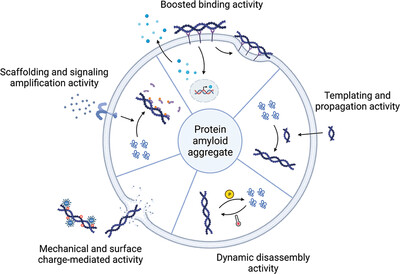
Protein amyloid aggregate plays important roles in both physiological processes and pathological diseases. In this review, the structural basis of self-assembly of amyloid fibrillar aggregation, and how the different structures of amyloid aggregates determine their distinct pathological or physiological activities are elucidated.
Electrostatic and hydrophobic interaction cooperative nanochaperone regulates protein folding
Graphical Abstract
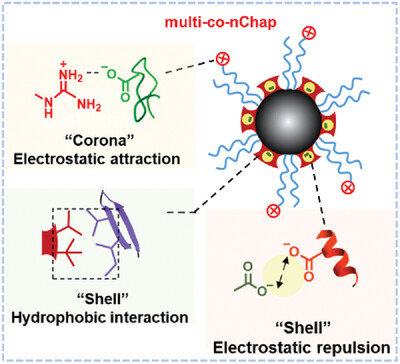
A novel multi-interaction cooperative nanochaperone (multi-co-nChap) is designed to regulating protein folding including facilitate de novo protein folding and protect native proteins from thermally induced misfolding and aggregation. The corona electrostatic attraction facilitates the diffusion of clients into the hydrophobic microdomains, while the shell electrostatic and hydrophobic interaction balances the capture and release of clients.
The effect of tailing lipidation on the bioactivity of antimicrobial peptides and their aggregation tendency
Graphical Abstract
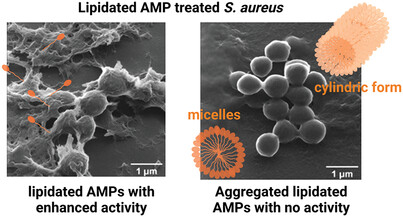
Attaching lipid chains to antimicrobial peptides, one of membrane active peptides, is known to improve peptide-membrane interactions, contributing to their bioactivity. This study of a series of N-terminal lipidated MSI-78(4-20) and pardaxin(1-22) provides insightful guidance on how N-terminal lipidation alters peptide conformations, affects their self-aggregation behaviour, peptide-membrane interactions and bioactivity to bacterial and red blood cell membranes.
2022
DNA functionalized plasmonic nanoassemblies as SERS sensors for environmental analysis
Graphical Abstract
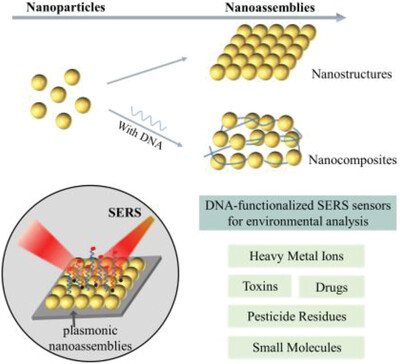
This review places an emphasis on the introduction of the programmable DNA-functionalized plasmonic nanoassemblies as SERS sensors for environmental analysis, where the specifically designed DNA acts as both structure basis and functional unit, combining the specificity of DNA recognition and the sensitivity of SERS detection via modulating the assembly of plasmonic nanoparticles.
A dual‐functional BODIPY‐based molecular rotor probe reveals different viscosity of protein aggregates in live cells
Graphical Abstract
Hybridization and self‐assembly behaviors of surface‐immobilized DNA in close proximity: A single‐molecule perspective
Graphical Abstract
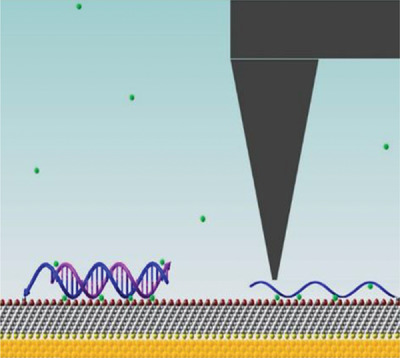
Recent advances on imaging and patterning of individual DNA molecules by atomic force microscopy are highlighted. Aggregation-induced crowding interactions, specifically the hybridization and self-assembly behaviors of surface-immobilized DNA capture probes in close proximity are reviewed and discussed. A single-molecule level understanding of structure–function relationship at surfaces paves the way toward rational engineering of DNA-based sensors and microarrays.
Denatured proteins show new vitality: Green synthesis of germanium oxide hollow microspheres with versatile functions by denaturing proteins around bubbles
Graphical Abstract
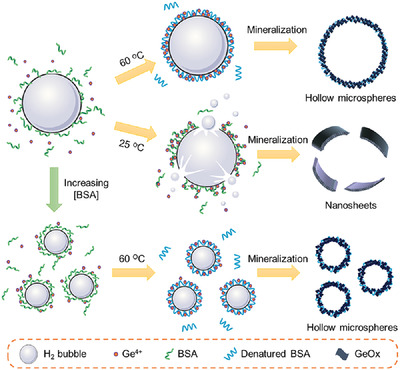
Denatured proteins show new vitality for hollow structures with versatile functions. Denatured bovine serum albumin can trigger an unusual biomineralization for the simple, green, and shape-controllable synthesis of GeOx hollow microsphere (HMS). GeOx HMS shows great application potential for intelligent gut-targeted pesticide delivery, label-free COVID-19 immunosensors, and nonenzymatic H2O2 sensors under physiological conditions at negative potentials.
Molecular determinants for the layering and coarsening of biological condensates
Graphical Abstract
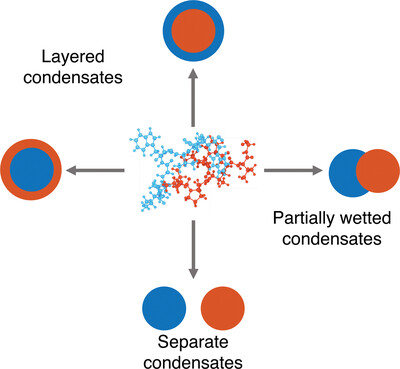
The diagram illustrates the four possible outcomes upon mixing two immiscible droplets, which are dictated by the interfacial tension between the two droplets and between the droplets and the solvent phase. Generalizations of this principle can be used to understand biocondensate organization and its connection with the interactions among the molecular components.
Chemical–biological approaches for the direct regulation of cell–cell aggregation
Graphical Abstract
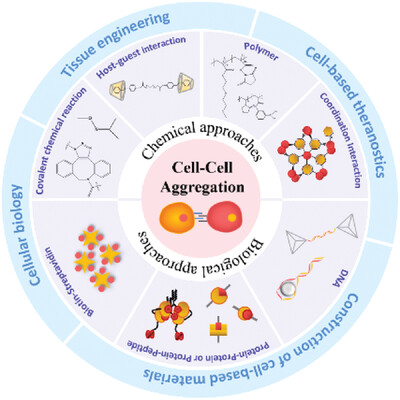
The precise control of cell–cell aggregation is not only vital for the cell biological field but also important for bioengineering field. In this review, we summarize the recent strategies using chemical and biological molecules to achieve the programmable regulation of cell–cell aggregations. We discuss the advantage and disadvantage of recent approaches, and talk about the possible development of the technology in this filed in future.
2021
Spherical nucleic acids: Organized nucleotide aggregates as versatile nanomedicine
Graphical Abstract
Nucleic acid–based aggregates and their biomedical applications
- Aggregate
- 133-144
- 10.1002/agt2.16
Graphical Abstract
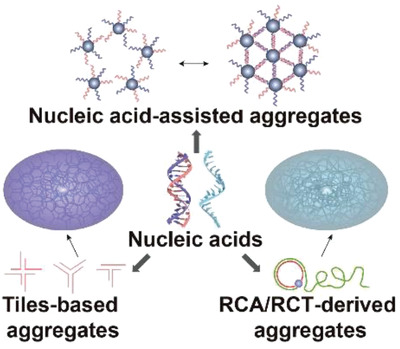
With careful design, nucleic acid–based aggregates can be constructed by tiles-based ligation, hybridization, or RCA/RCT reaction. Nucleic acid linkers can be integrated to other nanomaterials to fabricate nucleic acid–assisted aggregates. In this minireview, the recent advances of these aggregates for various biomedical applications, such as drug delivery, bioimaging, biosensing, cell analysis, and combined cancer therapy, are summarized.
Current trends and key considerations in the clinical translation of targeted fluorescent probes for intraoperative navigation
Graphical Abstract

The development of efficient fluorescent probes is a prerequisite for successful fluorescence imaging-guided surgery. This review provides a brief overview of the molecular designs of the targeted fluorescent probes under clinical evaluation, followed by recent advances in the field of NIR-II fluorescence imaging. In addition, key considerations concerning the design of fluorescent probes for clinical translation are discussed.
Nanoparticles as contrast agents for photoacoustic brain imaging
- Aggregate
- 4-19
- 10.1002/agt2.26
Graphical Abstract
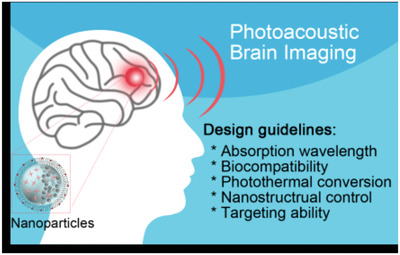
Photoacoustic imaging (PAI) has emerged as a promising technique for real-time detection and diagnosis of brain-related pathologies with the advantages of deep penetration and high resolution. This article discusses the latest developments of nanoparticles as PA contrast agents specifically designed for PAI of brain related disorders.
Intracellular aggregations of biological elements: From simple to complex
Graphical Abstract
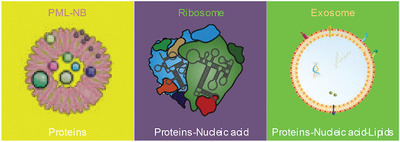
The direction of evolution is from simple to complex. Most components in a cell are interdependent in their mode of action, aggregating into a complex structure to function. Research on different intracellular complexes will facilitate the prevention and treatment of various diseases. Here, protein aggregates PML-NBs, protein-nucleic acid aggregates ribosomes, and protein-nucleic acid-lipid aggregates exosomes are listed and discussed, respectively.
Most recent advances on enzyme‐activatable optical probes for bioimaging
Graphical Abstract
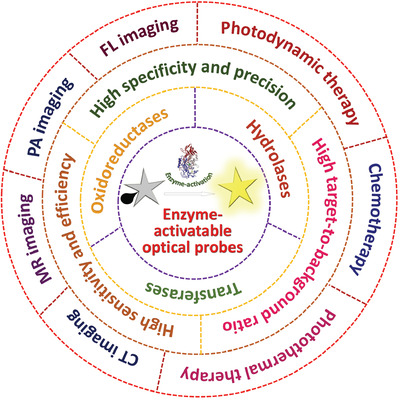
Enzyme-activatable optical probes are emerging as a new class of promising imaging tools for precise diagnosis of diseases at early stage with high target-to-background ratio, remarkably improved sensitivity, and dramatically enhanced specificity. This review briefly summarizes the most recent advances in this booming area, and analyzes the molecular design and working mechanism to offer insights into their biomedical applications.
2021
AIEgen–lipid structures: Assembly and biological applications
- Aggregate
- 69-79
- 10.1002/agt2.5
Graphical Abstract
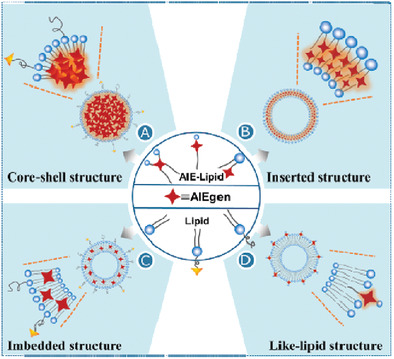
According to the different synthesis methods which result in various structures and properties of AIEgen-lipids, the structures are summarized into four kinds: core-shell, inserted, imbedded and like-lipid structures. The AIE molecule in monodisperse state presents no emission but aggregate shows high fluorescence intensity, as well as distinct ROS generation performance.
DNA nanostructure‐encoded fluorescent barcodes
- Aggregate
- 107-116
- 10.1002/agt2.8
Graphical Abstract
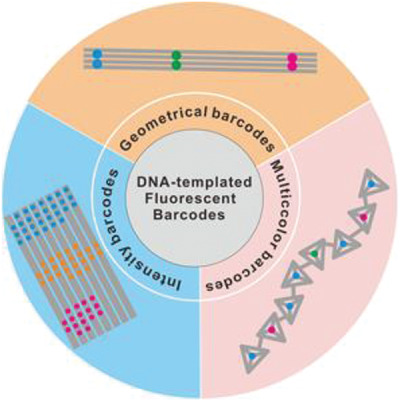
DNA nanostructures have extraordinary advantages in placing fluorescent molecules with near-atomic scale precision and controllable number. In this review, we summarize the recent progress of DNA nanostructure-encoded fluorescent barcodes and discuss the intermolecular photophysical interactions of dyes on the DNA template. Finally, the applications of fluorescent barcodes in biosensing and bioimaging are reviewed.




